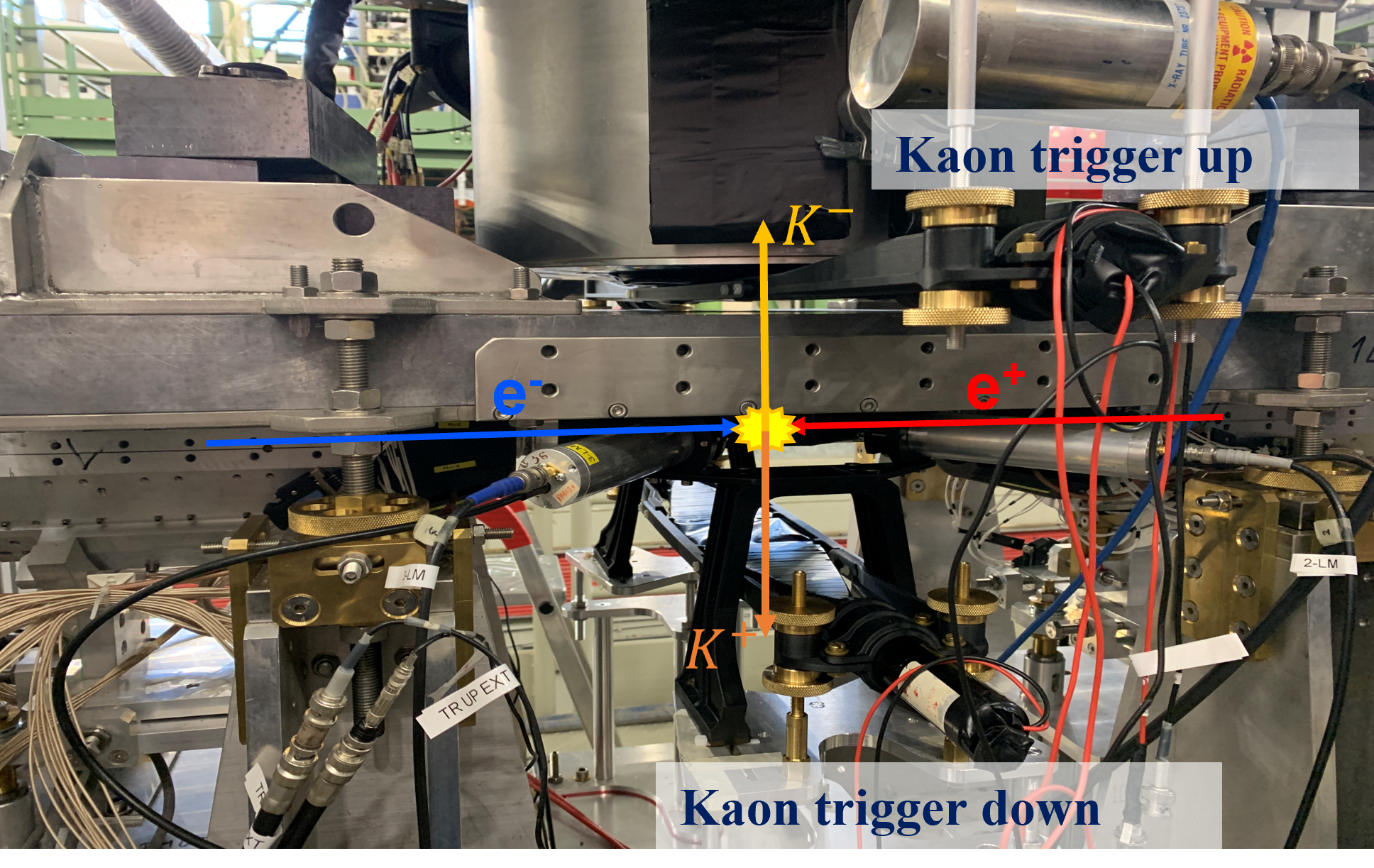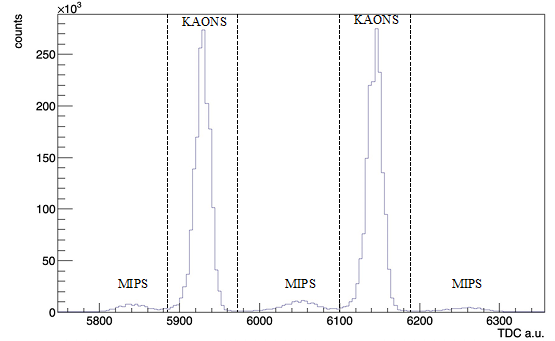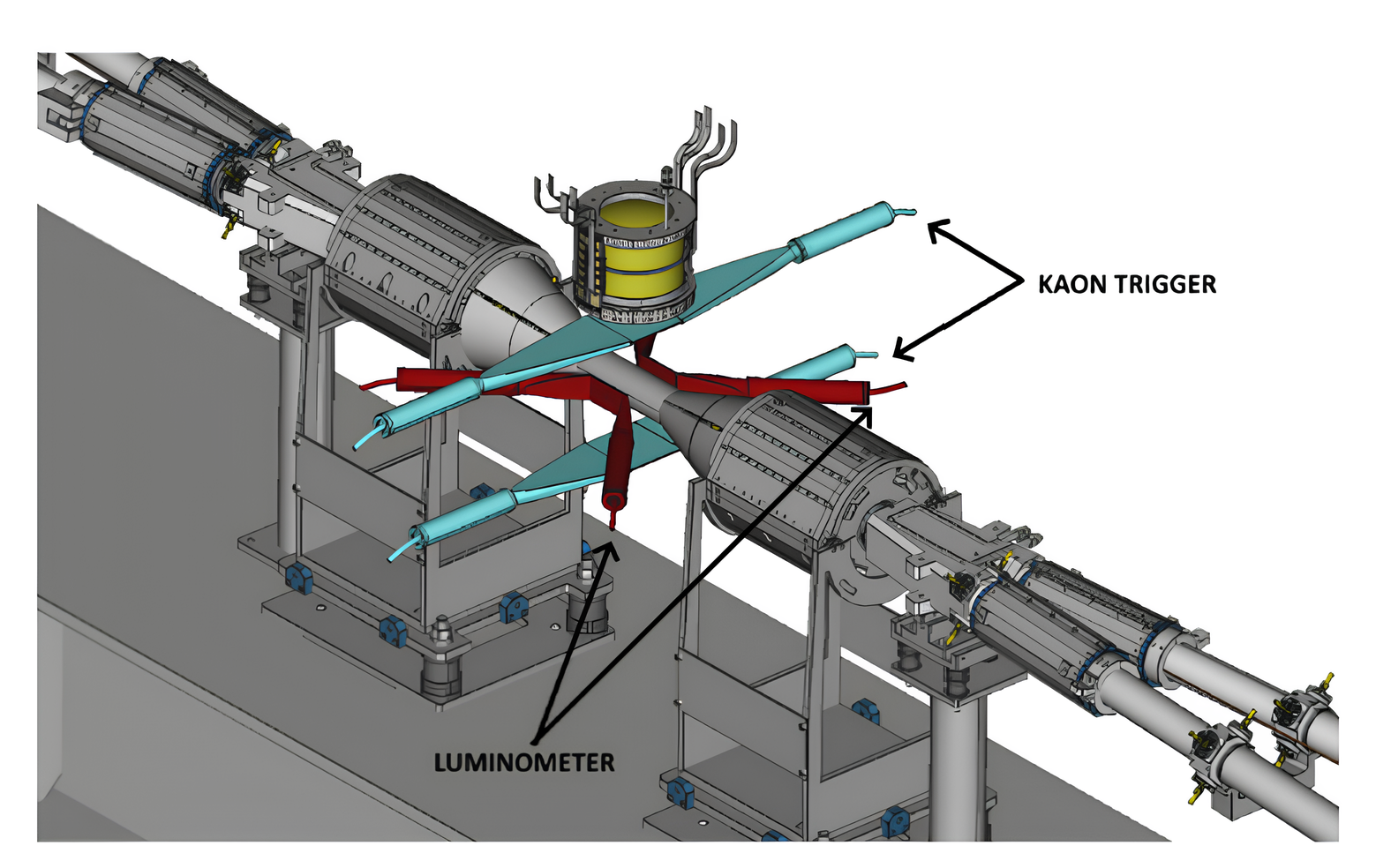SIDDHARTA-2 — The apparatus
3. Kaon trigger and Luminometer
The Kaon Trigger (KT) consists of two scintillators placed one above and one below the Interaction Point of the DAΦNE e+e– collider [1]. Each scintillator is read by a pair of PhotoMultipliers Tubes (PMTs). The KT is used to detect the back-to-back K+K– pairs produced by the Φ decay (e+e–→Φ→K+K–). A trigger signal is defined by the coincidence of the two scintillators and allows a drastic suppression of the asynchronous (i.e. electromagnetic) background by applying a timing window selection in coincidence with the SDDs’ x-ray signals. The KT takes advantage of the difference in the time of flight between the Minimum Ionizing Particles (MIPs) and kaons. The background rejection factor achieved by using the KT is ~105 [2].


The Luminometer (constructed based on the J-PET technology [3,4,5]) allows the mmeasurement of the number of kaons produced by the DAΦNE collider (luminosity). It consists of two plastic scintillators read by pairs of PMTs, placed on the longitudinal plane, one for each side and both in front of the Interaction Region (IR) of the DAΦNE collider. Because of the isotropy of the K–K+ back-to-back emission, the luminosity measured on the longitudinal plane is equivalent to the one on the vertical plane, in which SIDDHARTA-2 is positioned. As the KT, the luminometer takes advantage of the difference in the time of flight between MIPs and kaons, and allows to monitor the beam quality (i.e number of kaon produced per second, etc..) and background in real time [6].

References
-
-
[1]. L. De Paolis et al., Trigger rejection factor in the first kaonic helium run with the complete SIDDHARTA-2 setup, EPJ Web of Conferences 270, 00028 (2022).
-
[2]. A. Scordo et al., First tests of the full SIDDHARTA-2 experimental apparatus with a 4 He gaseous target, Acta Phys. Pol. A 142, 373 (2022).
-
[3]. P. Moskal et al., Positronium imaging with the novel multiphoton PET scanner, Sci. Adv. 7, eabh4394 (2021).
-
[4]. P. Moskal et al., Testing CPT symmetry in ortho-positronium decays with positronium annihilation tomography, Nature Communications 12, 5658 (2021).
-
[5]. S. Niedźwiecki et al., J-PET: A NEW TECHNOLOGY FOR THE WHOLE-BODY PET IMAGING, Acta Phys. Pol. B 48, 1567 (2017).
-
[6]. M. Skurzok et al., Characterization of the SIDDHARTA-2 luminosity monitor, JINST 15, P10010 (2020).
-
